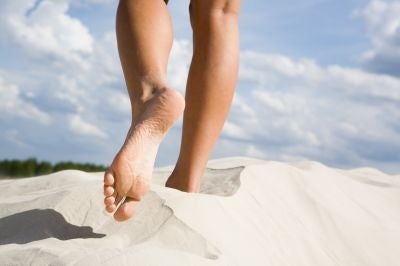Longer toes give sprinters a leg up: study

Longer toes and shorter lower legs allow sprinters to run faster than others, a new study suggests.
Researchers from Simon Fraser University in Vancouver and Pennsylvania State University compared the muscle architecture of 12 sprinters' and 12 non-athletes' feet and ankles.
Their aim at first was to try to help a National Football League wide receiver improve his technique and training regime, but their findings could also help anyone having trouble walking, study co-author Sabrina Lee, a biomechanics researcher at Simon Fraser University, told AFP.
Lee and her colleague Stephen Piazza of Penn State used ultrasound imaging to measure their subjects' Achilles tendon in motion and calculate the tendon leverage.
They also measured the length of their toes and plugged it all into a computer model.
"We found the greatest acceleration occurred when the Achilles tendon lever arm is the shortest and the toes are longest," Lee said.
A 100-meter (109 yards) race can be won or lost in the first few strides after sprinters launch from starting blocks.
The effectiveness of an accelerating sprinter's push off depends on the leverage that calf muscles have when pulling the heel off the ground as the toes press down.
Lee explained that a shorter lever arm "generates more force" to propel sprinters forward at the crucial start of a race, while longer toes provide "a larger contact surface with the ground" to apply the force.
"We looked at the acceleration phase when propulsion is very important," she said.
The study, "Built for Speed: Musculoskeletal Structure and Sprinting Ability," appears in the current Journal of Experimental Biology.
The findings do not necessarily prove that fast runners are born fast, as some professional trainers believe, because it remains unclear what effect training itself can have on influencing the shape of foot bones, Lee noted.
If joint or muscle architecture can indeed be changed through exercise, she said, "this research could help people with walking problems."
"This isn't just for sprinters," she said.
amc/jm
Subscribe to Independent Premium to bookmark this article
Want to bookmark your favourite articles and stories to read or reference later? Start your Independent Premium subscription today.

Join our commenting forum
Join thought-provoking conversations, follow other Independent readers and see their replies